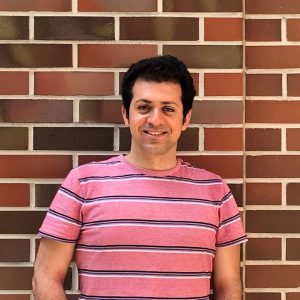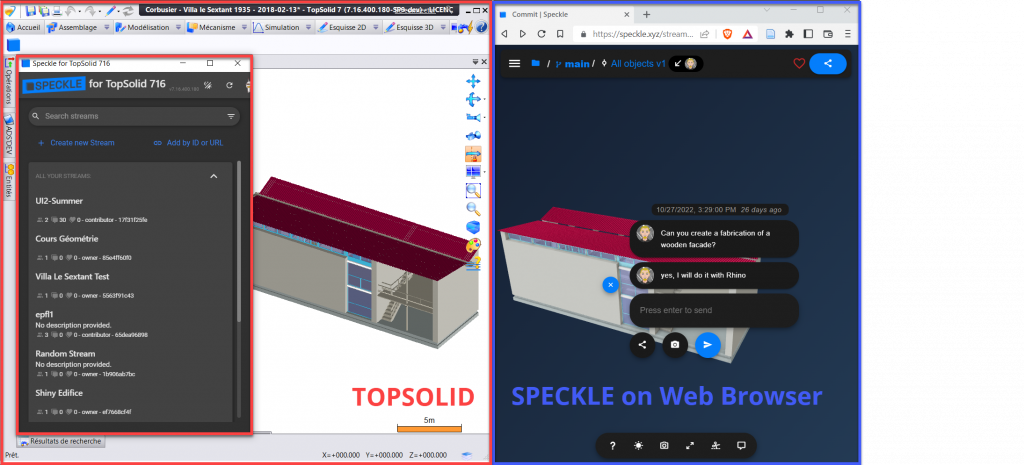
We believe that everyone should be able to work with the software tools of their choice and still have the possibility to exchange data and collaborate freely without restrictions.
What is the project about?
The TopSolid-Speckle Connector is a an open-source plugin for the CAD-CAM software TopSolid. It is developed by Ahmed Wael Ismail and Thomas Hächler from CNPA lab as a community contribution to the open-source project Speckle.
Speckle is an open-source platform and a distributed Common Data Environment (CDE) for Architecture, Engineering and Construction (AEC). It can be considered as a Git equivalent for AEC, as it allows direct interoperability, collaboration and versioning. Speckle aims to enhance open interoperability between AEC software tools, to prevent proprietary enclosure of data and allow better collaborative workflows between different disciplines working on architectural projects.

This is the first connector developed outside of the Speckle team. For this, our work has been showcased in the Speckle blog “Featured Developers”.
Technically, the plugin is coded in C#. It consists of a TopSolid plugin that launches Speckle’s Desktop UI and enables a connection to a Speckle server and commands. In addition, our implementation of Speckle’s Kit (Object model + converters) wrote the needed conversions between TopSolid and Speckle’s object models.
Why Open?
Our project is part of the CNPA lab’s engagement to support open-source projects. We see Open Source as the alternative for proprietary editors’ barriers to Open Building Information Modeling (BIM) and effective collaboration. We believe that everyone should be able to work with the software tools of their choice and still have the possibility to exchange data and collaborate freely without vendor restrictions.
In the CNPA lab, we think that it is our role to contribute to and foster open-source projects like Speckle. Actually, there are other open-source projects developed at CNPA. For example, I am also working on the Rhino.inside.TopSolid plugin, based on Rhino.inside, an open-source project by McNeel. Also, my colleague Raphaël Vouilloz explores the open IFC standard, using open-source tools like IFC.js and BlenderBIM.
Who benefits from it?
On a large scale, all AEC and industrial engineering actors benefit from our development. It adds another connector to the already large panoply of software connectors developed by Speckle.
Hence, our plugin enable new workflows and enriches the existing ones. More specifically, it allows workflows that go from design to fabrication and link architecture to the industrial engineering. A concrete example could be a supplier or fabricator, who needs to share data and collaborate with an architect. Our connector will allow them to send and receive data from the software the architect is using, without needing to exchange files, thanks to the direct connectors provided by Speckle.
How did you make it Open Software?
We made our development open by publishing our code in a public repository on GitHub. Anyone can consult the source code, study it and eventually contribute or open an issue if any bug is found. We plan to continue maintaining the code, add more functionalities and make sure it keeps evolving.
Contact: Ahmed Wael, Thomas Hächler